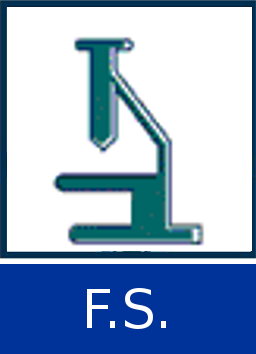Numerical investigation of low-density metallic nanowire networks as a cure for defective transparent conducting materials
Baret, Amaury 
Promoteur(s) :
Nguyen, Ngoc Duy 
Date de soutenance : 29-jui-2022/30-jui-2022 • URL permanente : http://hdl.handle.net/2268.2/14793
Détails
| Titre : | Numerical investigation of low-density metallic nanowire networks as a cure for defective transparent conducting materials |
| Auteur : | Baret, Amaury 
|
| Date de soutenance : | 29-jui-2022/30-jui-2022 |
| Promoteur(s) : | Nguyen, Ngoc Duy 
|
| Membre(s) du jury : | Dorbolo, Stéphane 
Silhanek, Alejandro 
Schlagheck, Peter 
|
| Langue : | Anglais |
| Mots-clés : | [en] Ag NW networks [en] Transparent Conducting Materials [en] Numerical simulation [en] Bridge percolation |
| Discipline(s) : | Physique, chimie, mathématiques & sciences de la terre > Physique |
| Public cible : | Chercheurs Professionnels du domaine Etudiants |
| Institution(s) : | Université de Liège, Liège, Belgique |
| Diplôme : | Master en sciences physiques, à finalité approfondie |
| Faculté : | Mémoires de la Faculté des Sciences |
Résumé
[en] As the race for the development of novel Transparent Conducting Materials (TCMs) compatible with a new generation of flexible electronics continues, the perspectives of Indium Tin Oxide (ITO) as transparent electrodes in thin film devices become more and more questionable due to its well-known brittleness and to the relatively limited supply of indium worldwide. In this context, one of the most promising emerging alternatives to ITO are metallic nanowire networks (MNW networks), in particular silver NW networks.
In this research work, we develop a set of numerical tools for the investigation of conventional MNW networks. Via the combined use of Monte Carlo simulations, graph theory and electrical circuit mapping, the percolating and electrical properties of NW networks as well as their dependence with fundamental parameters are first studied in detail, confirming some results from the literature while also unveiling new performance capabilities for computer modeling. Secondly, we introduce a novel type of TCM, resulting from the deposition of sparse MNW networks on fractured ITO films, the features of which we investigate in depth, both from a theoretical and numerical perspective. In order to accurately model the particular conduction mechanics associated with this hybrid material, we design an original concept of bridge percolation that accounts for the various contributions to the charge transport in the composite. Notably, we show that the sheet resistance of the damaged ITO thin films can be decreased by up to 90% via the subsequent deposition of Ag NWs with areal densities 100 times lower than those required to reach percolation in conventional NW networks, thus triggering an economical incentive in the context of material criticality.
Fichier(s)
Document(s)

 Master_thesis_Amaury_Baret.pdf
Master_thesis_Amaury_Baret.pdf
Description:
Taille: 58.91 MB
Format: Adobe PDF
Citer ce mémoire
L'Université de Liège ne garantit pas la qualité scientifique de ces travaux d'étudiants ni l'exactitude de l'ensemble des informations qu'ils contiennent.


 Master Thesis Online
Master Thesis Online




